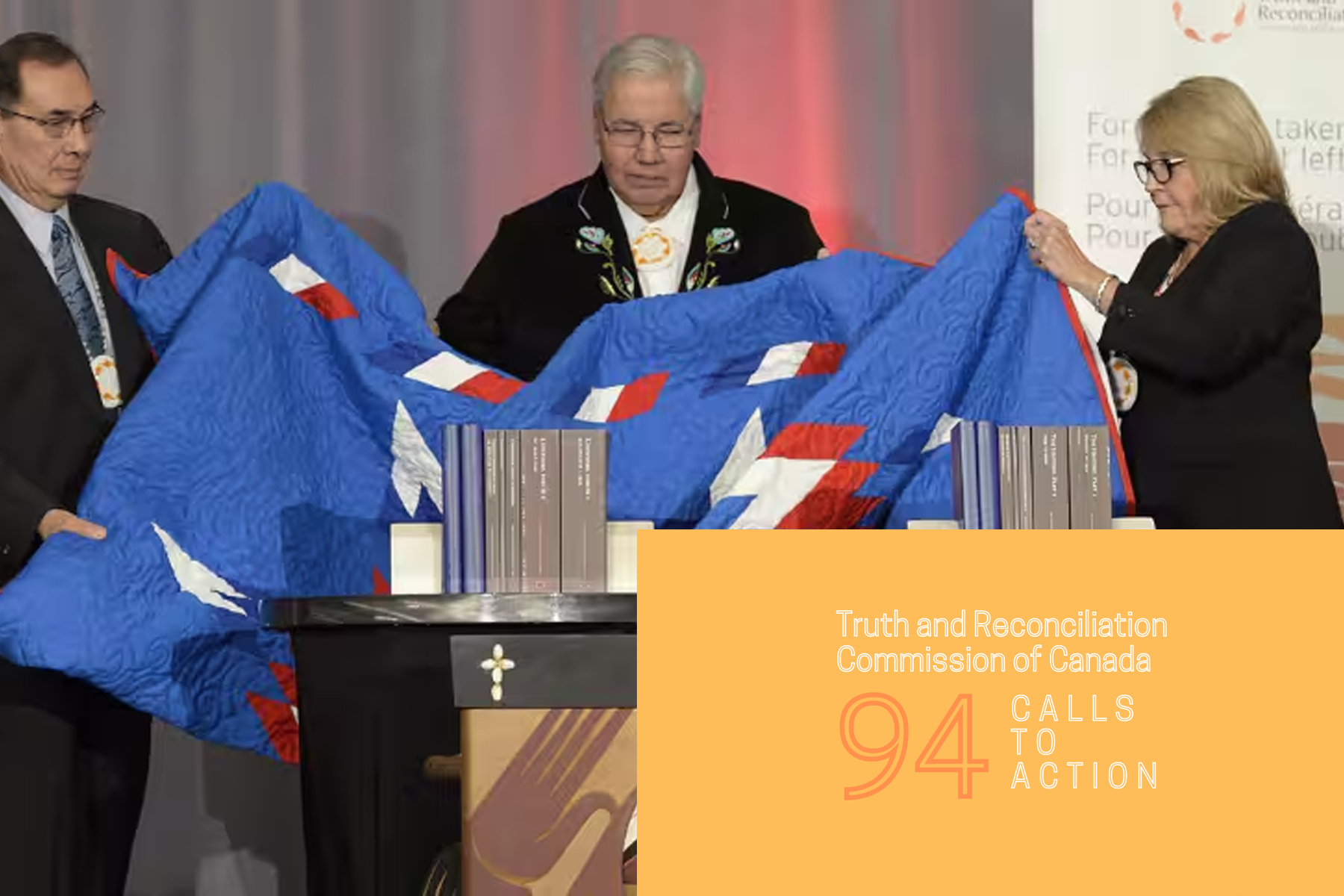Ten years have passed since the Truth and Reconciliation Commission of Canada (TRC) released their landmark Final Report in June 2015. The Commission, established under the Indian Residential Schools Settlement Agreement, spent seven years gathering testimony from over 6,000 Survivors to document the devastating legacy of residential schools. This led them to issuing 94 Calls to Action — a roadmap for governments, institutions and Canadians to repair harm and build a more just future. These Calls were never meant as symbolic gestures; they were concrete, actionable steps. A decade later, one question remains: has Canada lived up to them?
Throughout the twenty-first century, reconciliation has been a frequent talking point in Ottawa. Prime ministers, premiers and ministers have issued apologies, commemorated residential school Survivors — along with their friends and family — and pledged action. That said, Indigenous leaders and independent watchdogs consistently highlight a gap between words and deeds.
The Assembly of First Nations (AFN) reported in September 2025 that there have been “no completed Calls to Action (CTA) for the 2024-2025 year” and only about 13 of the 94 have been fulfilled in the past 10 years. Indigenous Watchdog, a non-profit tracker, shows that as of September of this year, more calls remain “not started” than completed, with many stalled.
The federal government’s Sixth Statutory Report (2024–25) acknowledges progress but avoids a clear tally, instead publishing selective updates on files like child welfare, justice and language rights. At the same time, Ottawa has scaled back funding: the AFN warns that the federal government’s 15 per cent budget cuts over three years announced in July are expected to reduce resources available for education, health and language revitalization programs, directly affecting reconciliation efforts and undermining momentum.
Some progress is undeniable. In 2019, Parliament passed the Indigenous Languages Act (Call 14), affirming language rights and in 2021 appointed the first Indigenous Languages Commissioner (Call 15). That same year, the Oath of Citizenship was amended (Call 94) to include a pledge to respect the “Aboriginal and treaty rights of First Nations, Inuit and Métis people.”
Also in 2021, Parliament declared Sept. 30 a statutory holiday, the National Day for Truth and Reconciliation (Call 80). Ottawa also passed Bill C-15, the United Nations’ Declarations on the Rights of Indigenous Peoples (UNDRIP) Act (Call 43), aligning federal law with the UNDRIP and committing to an action plan, though provinces vary in implementation.
More recently, in 2024 Parliament created the National Council for Reconciliation (Call 53) through Bill C-29, with its inaugural board appointed in March of this year. Some commemorative projects (Calls 81-83), such as Toronto’s Spirit Garden and Saskatchewan’s Residential School Memorial, have been completed. In March 2025, Ottawa unveiled an Indigenous Justice Strategy (Call 40) intended to address overrepresentation in prisons, though the AFN criticized it for lacking dedicated funding.
While some progress has been made, the most urgent Calls — those addressing systemic inequities — remain largely unmet, as revealed in AFN 2025 report.
In child welfare (Calls 1-5), Indigenous children are still vastly overrepresented in foster care, group homes and other forms of out-of-home care. The government has failed to produce consistent national data with Jordan’s Principle remaining backlogged, as Indigenous Watchdog reports show that there are over 140,000 unresolved requests as of 2025.
In education (Calls 6-12), funding disparities between on-reserve and off-reserve schools persist and no Indigenous education legislation has been passed. The AFN warns of a backlog of “finalized but unfunded Regional Education Agreements” and even reports cuts to education infrastructure funding.
In health (Calls 18-24), gaps in outcomes remain stark, especially for Métis, Inuit and off-reserve communities. Jurisdictional disputes over funding and responsibility continue to obstruct progress.
In justice (Calls 25-42), overrepresentation of Indigenous peoples in prisons and youth detention remains unchanged. Despite the new Indigenous Justice Strategy, systemic reforms are minimal without resources.
The Calls on missing children and burial sites (71-76) remain unresolved and painful. While Survivors and communities continue to search for unmarked graves, in February Ottawa ended funding for the National Survivors’ Secretariat and the National Advisory Committee on Missing Children — a decision Indigenous leaders condemned as a betrayal.
Other areas show little to no progress. Corporate adoption of UNDRIP (Call 92) remains voluntary and most companies have not incorporated Indigenous rights into policy or practice. Provincial uptake of Calls varies widely, leaving a fragmented national picture.
The reasons for this sluggish pace are structural. Many Calls require coordination across federal, provincial and Indigenous governments — a complex jurisdictional web — combined with the lack of binding deadlines, this has enabled the Canadian government to stall indefinitely.
Perhaps most troubling, even so-called “completed” Calls often fall short of the TRC’s intent. The Indigenous Languages Act is law but underfunded. The National Council for Reconciliation exists, but with limited resources. Critics argue Canada treats reconciliation as a historical issue rather than addressing the ongoing colonial structures — such as land dispossession, resource extraction and systemic racism — that shape Indigenous life today.
Reporting over the past year indicates that reconciliation in Canada remains weighted more toward symbolic gestures than systemic reform. Accountability mechanisms remain weak, with Indigenous-led oversight bodies underfunded or limited in mandate. No binding timelines or benchmarks have been established to track progress across the 94 Calls to Action, leaving implementation inconsistent and often delayed.
Ten years after the TRC’s Calls to Action, Canada has made modest progress in symbolic areas — bringing statutory holidays, citizenship oaths and pieces of legislation — but has fallen short on the structural changes Survivors demanded. With fewer than 15 per cent of Calls fulfilled, reconciliation risks becoming hollow rhetoric unless backed by action, resources and accountability.

